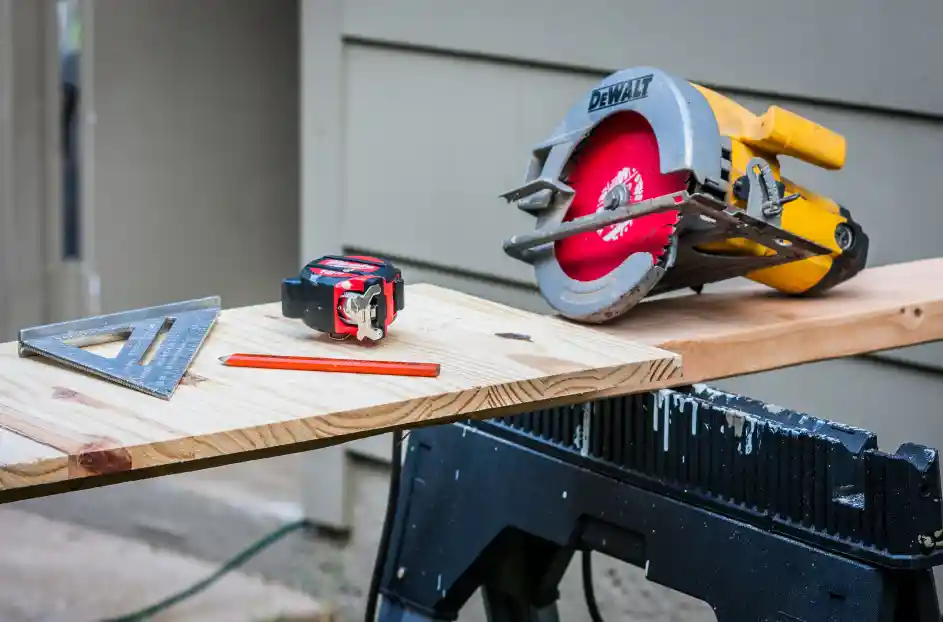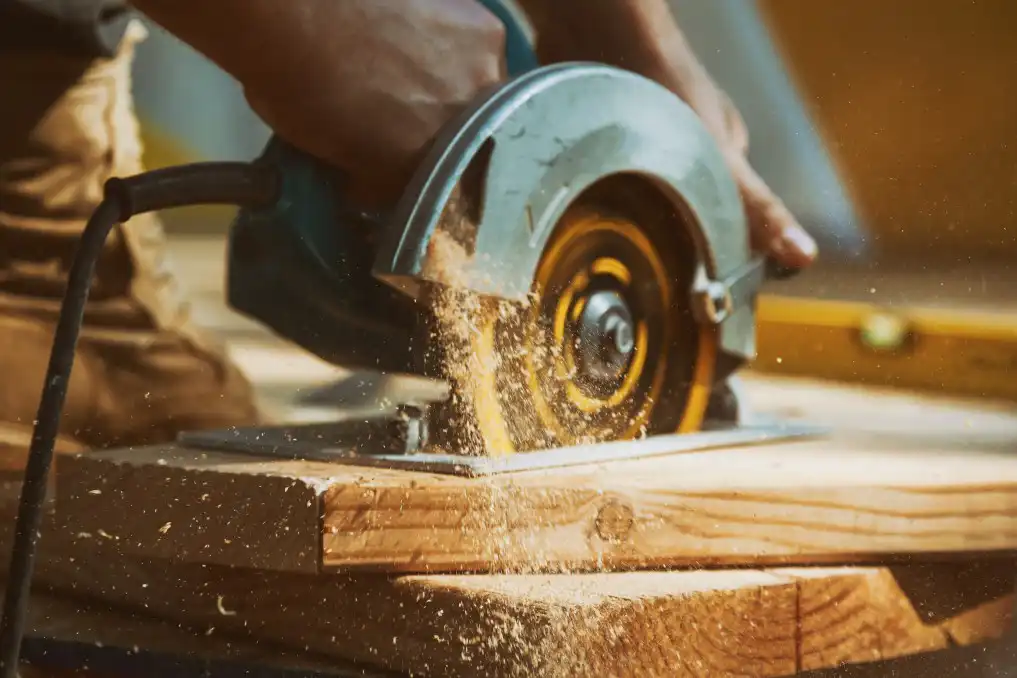It helps to be informed when choosing between a skill saw vs circular saw. Are you in the market for a new saw but need help deciding between a skill saw and a circular saw? You’re not alone. When I was in the same position, I did a lot of research, but I still bought the wrong saw for my needs. I wish I had known then what I know now, so I’m writing this post to share my experience and help others avoid the same mistakes. In this post, I’ll compare skill and circular saws and give you the pros and cons of each, so you can make an informed decision and choose the right one. They have more similarities than differences. It is the differences that point to your pick. Pay attention to power, weight, blade sizes, and deep-cutting capacity. Choose one that meets your needs.
Overview of a Skill saw
A skill saw fits into tight spaces and works without gas. It falls under handheld circular saws and is powered by electricity. The motor is behind the saw blade. All skill saws are circular saws since they all have circular blades that spin fast to remove wood. However, not all skill saws are circular saws (Howstuffworks).
Some users prefer skill saws for their lightweight construction and easy-to-handle design. They have become a trusted brand since they have been in the game for a long time. Old-timers keep referring to any powered circular saw as a skill saw. These two terms should not be synonyms since that can be misleading and confusing to a first-timer.

A skill saw comes with a basic design consisting of a motor, blade, blade guard, and base. When cutting, the blade guard retracts out of the way, allowing the saw to cut through the material. Start your cut at the end of the material you are cutting. You will not have a splinter-free cut. The dust extraction system could have been more efficient due to the saw blade side opening.
Consistency and exact cutting accuracy from a side fence are not guaranteed. A skill saw is a handheld circular saw that cut materials by moving its toothed disc in a rotatory motion. Although it runs on electricity, it has few models that can run on gasoline and a hydraulic motor. A skill saw is straightforward. Use minimal effort in cutting if you follow the process. Clamp the material using a machine vice. Tighten the vise to avoid movement of the Skilsaw.
Pros
- Ideal for tight spaces
- Works without gas
- Fast
- Simple design
- It gives a smooth finish
- Lighter
- Ease of use
Cons
- The poor dust collection system
- It could have been more accurate
Overview of a Circular saw
The circular saw works for professional construction projects and DIY home improvement. It is a power tool with a round metal blade edged with sharp teeth to cut multiple materials such as wood, metals, cement blocks, brick, fiberglass, and plastics.
The blade in a circular saw spins around to provide a clean cut to the material. It is up to you to mount to a table or left-handed or right-handed handheld equipment. That is up to your preference. You can attach different blades for different types of material.

A circular saw is quick and effective. All you need to do is adjust the saw for the proper height and depth. Line it up to where you want to make a cut and use some effort to push it to glide it across the material. However, do not push too hard. It is easy to use for making straight cuts.
Circular saws convert larger timber logs into more refined and usable lumber. At first, the models were bigger and bulkier, but they started to come in smaller and more portable sizes (Toolsgarden.net). As they became smaller, they became efficient. There are countless models to choose from.
Pros
- Variety of options
- More affordable models
- Highly versatile
- Quick and effective
- Minimal effort required
- Portable
- User-friendly
Cons
- Endless low-quality models
- Different blades for different applications
Favorite Features | Skill Saw vs Circular Saw
Motor
A skill saw became better with the introduction of lithium-powered inbuilt batteries. You can take it anywhere without being worried about the power source. A circular saw motor can be placed alongside the saw blade and using a direct drive mechanism, making it a more reliable saw.
Blade
The toothed skill saw blade has a rotary motion that produces torque against the material’s edge. That makes it easy to cut materials. They saw motion is rapid. That is how the skill saw leaves narrow slits for a smooth finish. However, it requires filing before final delivery, depending on the material and features. You are not guaranteed a fine edge. Sometimes it leaves burrs after cutting through the metal or plastic; remove them using sandpaper.
The saw has Tungsten carbide tips that make the cutting efficiency. The saw blades are on shafts that rotate and transmit the rotatory motion to the saw blade. It requires more power when compared with other models. Using more power makes it easy and quick to cut the material.
Circular saws cut only in the forward direction. The teeth of circular saw blades cut upwards into the material from below for safety purposes. When they start cutting backward, that is now kickbacks. Kickbacks are dangerous to the user and people around. Do not spin them in a different direction like you spin a table saw blade.
The cut type is what separates the skill saw from a circular saw. A circular saw blade is a sharpened metal disk mounted on the top of a motor and spins while the whole unit connects to a handle. The handle starts moving the circular saw blade in the forward direction and backward direction. Circular saws cut wood in the direction of the material’s grain and cut long straight lines, making cuts with multiple curves.
Portability
A skill saw has the ease of carrying it anywhere. It has so much stability that you can cut without much recoil reaction. That helps one cut the lumber quickly. There is no need to place the lumber on the table and hold it while the table saw cuts it. It even performs better than a chop saw. You can cut a wood piece, and it remains stable.
The introduction of circular saws came with big and heavy models. These were difficult to maneuver and store. With the coming of more advanced features, there come more lightweight models. That is how the saw toll became more user-friendly to woodworkers.
What could be better
Skill saw
- It could have been more efficient on the dust collection system.
- It could have been more accurate from a side fence.
Circular saw
- A wide selection of higher-quality models would do.
- More lightweight models give you a variety to choose from.
Similarities
- They are both powered by electricity.
- The motors are mounted in a housing behind the blade.
- Both have circular blades that spin rapidly to bite through the wood.
Differences
- Circular saws can be fixed to radial arms, which skill saws cannot have.
- Circular saws can be gas-powered, have sidewinder or hybrid designs, or even fixed to radial arms, which skill saws cannot.
The verdict Circular Saw vs Skill Saw
In summation, what matters is what is best for your needs. Use the above guide to help you distinguish which is best for your project. A direct-drive saw is light and uses less power. Go for a circular saw. If you are working in tight spaces, need a deep cutting capacity, or want more power, pick a skill saw.
- Grain and Sheen: Teak Oil versus Danish Oil Uncovered - January 10, 2024
- The Cherry on Top: Crafting the Perfect Cutting Board - January 9, 2024
- Polyurethane Water-Based vs Oil-Based: Choosing the Right Finish - January 8, 2024
